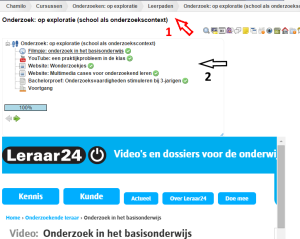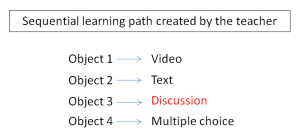I’m working a on project where we want to offer our students online learning paths which are adapted to their needs and thus take into account the very diverse student inflow we encounter. In order to construct an answer on this challenge, I will write a few blog posts.
Note: Please consider also reading the previous post where I tackled the conceptual framework of learning paths (if you want the complete story).
Can we use the learning path tool in our current LMS, if we want to benefit from the new learning path design you described in the previous post?
Continue reading “Rethinking learning paths: test our ideas against the traditional LMS”


